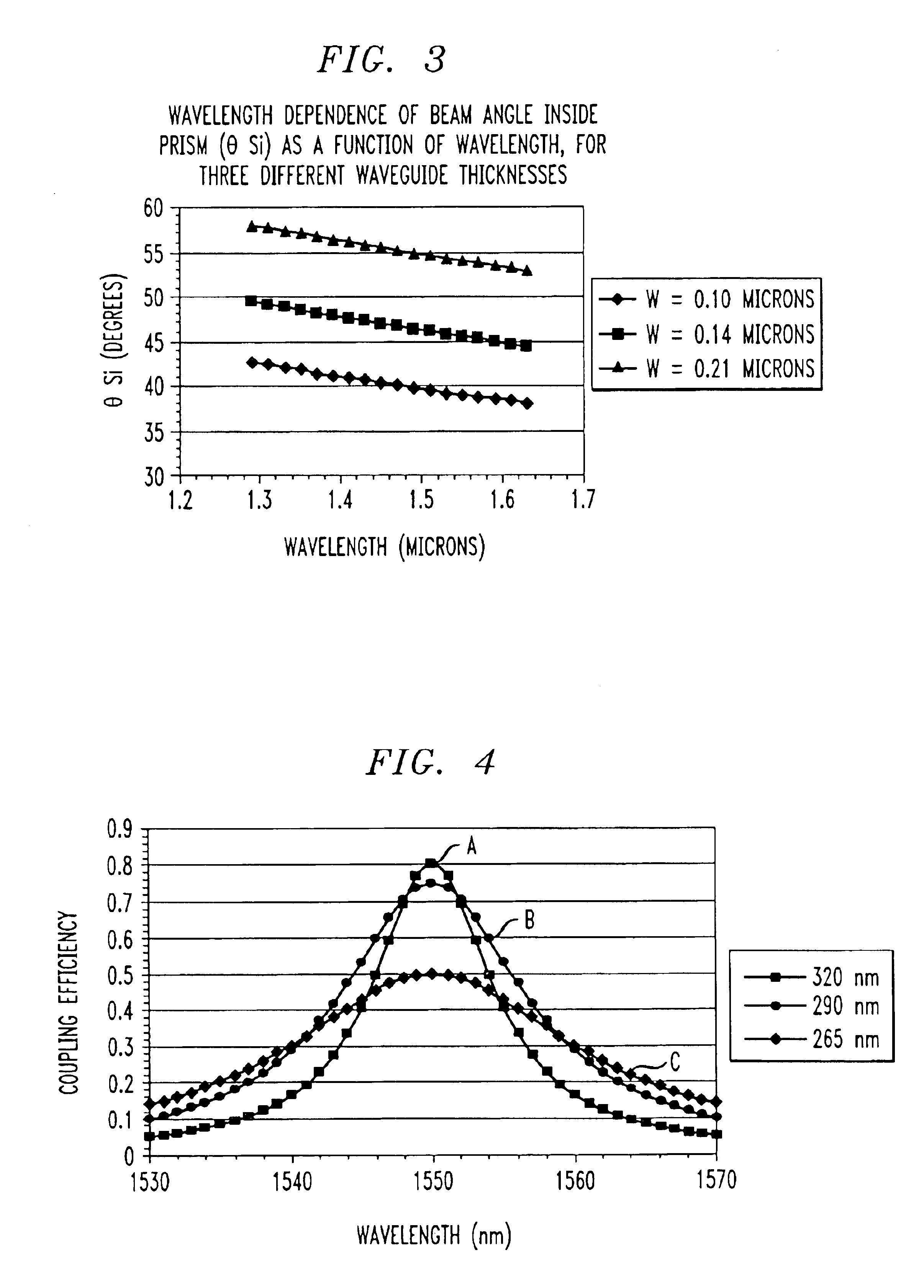Arrangements for reducing wavelength sensitivity in prism-coupled SOI-based optical systems
a soi-based optical system and wavelength sensitivity technology, applied in the field of arrangement for reducing wavelength sensitivity in prism-coupled soi-based optical systems, can solve the problems of inability to meet the requirements of many applications, inconvenient insertion loss, and inverse taper arrangement, so as to reduce the thickness of the evanescent coupling layer, reduce optical coupling loss, and maximize coupling efficiency
- Summary
- Abstract
- Description
- Claims
- Application Information
AI Technical Summary
Benefits of technology
Problems solved by technology
Method used
Image
Examples
Embodiment Construction
[0027]The various embodiments of the present invention are all directed to the utilization of the evanescent coupling of light into and out of thin (e.g., sub-micron) silicon waveguides that are formed within a surface single crystal silicon layer (the “SOI layer”) of an SOI structure that consists of a silicon substrate, a buried dielectric layer and the surface SOI layer. A preferred arrangement for providing optical coupling of a free space optical beam into and out of the thin silicon waveguide is to use a prism coupling arrangement, as described in detail in our co-pending applications Ser. No. 10 / 668,947, filed Sep. 23, 2003 and Ser. No. 10 / 720,372, filed Nov. 24, 2003. FIG. 1 illustrates an exemplary prism coupling arrangement 10 between free space input and output optical beams, denoted as I and O, respectively, and a thin silicon waveguide within an SOI layer 12. As shown, SOI layer 12 comprises the surface layer of an SOI structure 20 that further comprises a silicon subst...
PUM
 Login to View More
Login to View More Abstract
Description
Claims
Application Information
 Login to View More
Login to View More - R&D
- Intellectual Property
- Life Sciences
- Materials
- Tech Scout
- Unparalleled Data Quality
- Higher Quality Content
- 60% Fewer Hallucinations
Browse by: Latest US Patents, China's latest patents, Technical Efficacy Thesaurus, Application Domain, Technology Topic, Popular Technical Reports.
© 2025 PatSnap. All rights reserved.Legal|Privacy policy|Modern Slavery Act Transparency Statement|Sitemap|About US| Contact US: help@patsnap.com



